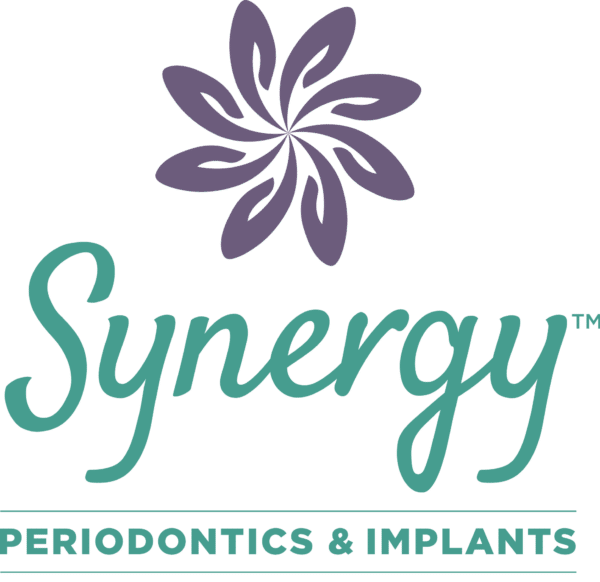BONE GRAFTING

If you are missing teeth due to previous extractions or tooth loss, it is natural for the underlying bone in that area to shrink or be reabsorbed resulting in bone loss. Bone grafting is a minor surgical procedure used to add bone material to an area of bone loss to prepare it for an implant.
TYPES OF BONE GRAFTING PROCEDURES
If you have lost natural teeth or had a tooth extracted, it is natural for the underlying bone known as the alveolar bone to shrink in that area resulting in loss of bone tissue. As bone is naturally reabsorbed, teeth can migrate and shift around in the mouth changing your bite over time. Dental implants are an effective solution to maintain the function and aesthetics of your smile. If you have been told that you do not have enough bone for implants, Synergy Periodontics and Implants can help.
Ridge Augmentation
When a tooth is lost and not immediately replaced, the bone reacts to this event by ‘shrinking away.’ The bone becomes thinner from a width perspective and the bone height is frequently reduced. This process is known as bone resorption. In order to place implants, it is necessary to rebuild the bone width and height through regenerative surgical therapy. Bone grafting of the ridge is frequently required to enable ideal placement of dental implants. The grafting is completed utilizing tissue bank and/or synthetic bone particles combined with collagen or non resorbing membranes. It is a highly predictable procedure.
Socket Grafting
Socket grafting is a type of bone graft that is performed immediately following the extraction of a tooth. Bone grafting material is placed directly in the tooth socket. The area is left to heal for 2-3 months. During that time, the body rebuilds bone where the graft is placed and new gum tissue grows over it. Once the bone and gum is healed, a dental implant can be placed in a solid foundation with healthy gum support around it.
SINUS LIFT PROCEDURE
In the back of the upper jaw bone, dental implants are frequently needed. This area is adjacent to the sinus cavity (essentially a large pocket of air) which is not able to support a dental implant. In order for a dental implant to be successful in this area of the mouth there must be sufficient bone height and width to connect (integrate) to the dental implant. When the upper back teeth are lost and not replaced, the sinus cavity becomes enlarged, dropping down into the space that an implant would be placed. This very large sinus is like a “giant air pocket” and not capable of supporting an implant. A procedure known as sinus grafting (sinus lift) is performed to create bone that will reposition the sinus back to its original location and ultimately support the implants. Sinus grafting is an extremely common form of bone grafting and is highly predictable.
After the sinus lift procedure, the area is closed and the bone begins to regenerate and heal for 8 to 12 months. A dental implant can then be integrated into the new bone tissue.
A sinus lift is an outpatient procedure and usually performed under sedation. Patients typically experience minimal discomfort during the healing process. After a bone graft procedure you may be prescribed antibiotics to prevent infection. During the healing process, you will come for regular checkups to monitor the progress of your healing.

Panoramic image of bilateral lateral window sinus lifts
A PATIENT SUCCESS STORY
A wonderful, warm, friendly, and family-like atmosphere. My experience with 3 dental implants was very pleasant. It was a long process since I had to have bone grafting and wait for it to heal, but Dr. Thanos Dounis was always patient with my anxiousness and treated me with care and respect. My journey is done and I am very please with the final results. If you are considering dental implants, I highly recommend the Synergy Periodontics and Implants office. You will be very pleased with the care of Dr. Thanos Dounis.


